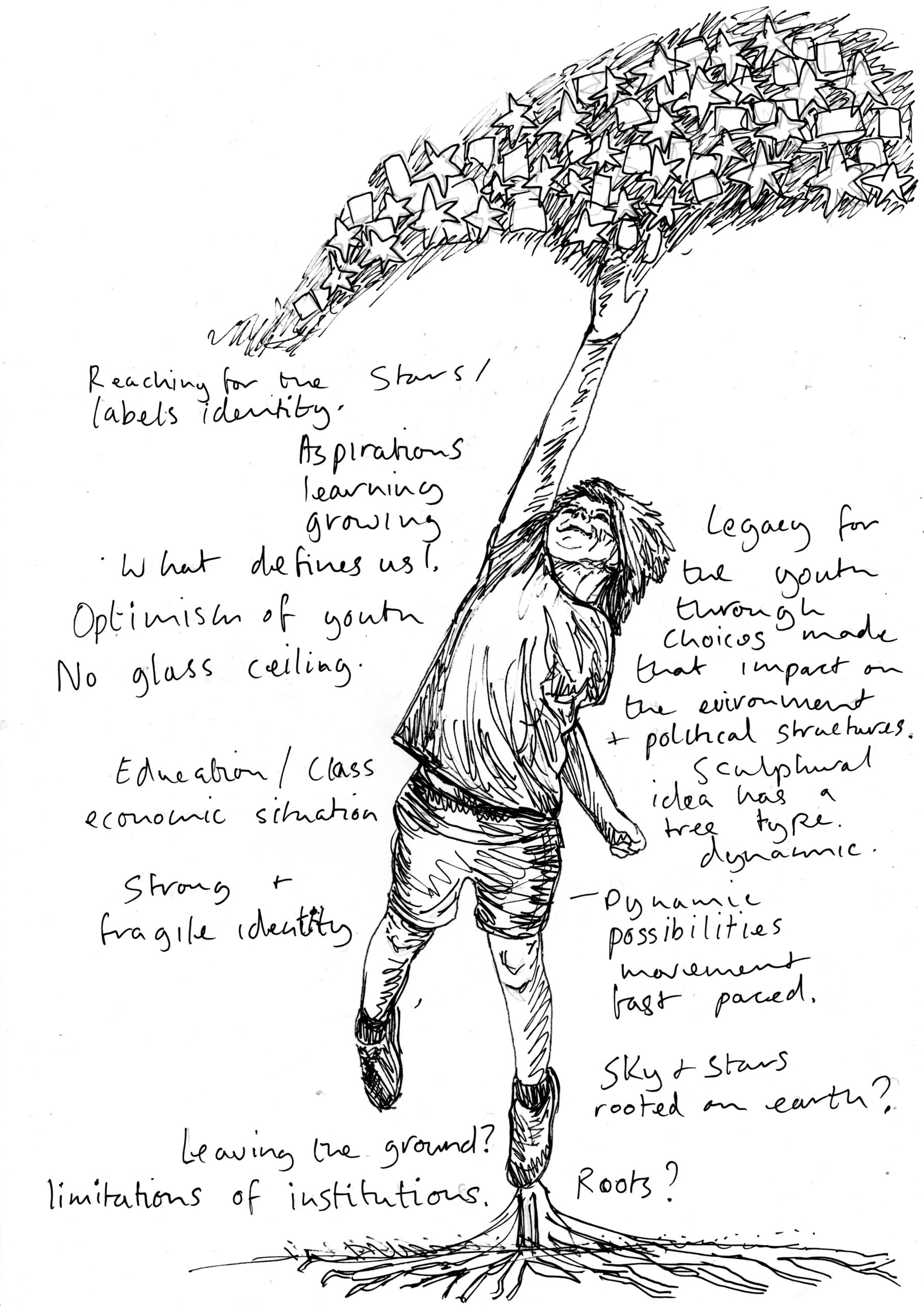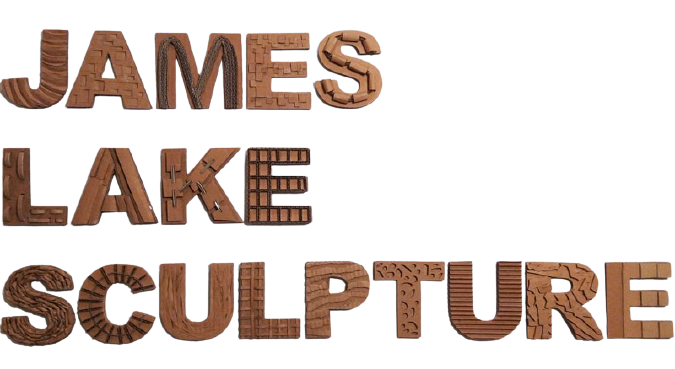Demonstrating my working practices
Introduction
This section of the website looks at how I construct and sculpt with the medium of cardboard. From an initial sketch of an idea on A4 paper to a larger 2D drawing on card to form templates to test shape and size, to finally using corrugated card to build cross sections to build form and layers, whilst adding smaller pieces to get the surface detail.
Sharing the process with others is about giving a wider audience access to a process that I’ve developed over twenty years to make sculptural artworks that are not reliant on expensive materials and a fancy studio space. I use low cost and easily resourced materials, such as recycled cardboard, masking tape, hot melt glue and scissors. My aim has always been to share and encourage people to realise sophisticated and potentially complex ideas, just through using cardboard.
The sculptural process of working with cardboard can be adapted to suit a range of abilities. For me, having a physical disability means that I can create smaller sections that get pieced together to make a large-scale sculpture. Being dyslexic, I like to work with fragments of ideas that I can assemble as the work comes into focus, like the lens of a camera.
Introduction
Effects of the Lockdown = Stop Frame
‘Effects of Lockdown’ – Stop Frame
This is a 360 degree stop frame animation of the cardboard sculpture ‘Effects of the Lockdown,’ showing the external and interior details. You can get a sense of the structure and multiple perspectives, showing the many layers and details. The surface detail was achieved using multiple pieces of curved sections of card to give a dynamic sense of movement, similar in nature to the texture of brush strokes made using thick paint. The internal feature of this sculpture contains a small scale upturned cardboard tree in the chest cavity. This was a reference to the link between lung health and the environment.
The title of the work is reference to the time in which it was created and the impact that this had on my teenage son. The life-size figure stands holding a phone, looking down at the charcoal covered screen. This was something I’d observed not just with my son, but as a feature of modern life of the younger generation, particularly during lockdown.
The figure is stood on a round base finished in the style of a yellow brick road. This was important at the time, as so much of life felt like it had changed, and the path ahead was uncertain – a nod to the Wizard of Oz.
‘Time’ – Stop Frame
This is a 360 degree stop frame animation of the cardboard sculpture ‘Time,’ a life-size cardboard sculpture of my 74-year-old mother. It started 12 years ago as a portrait that remained unfinished on the shelf until recently. I wanted to represent her history and life, showing the passage of time and find a way to incorporate her thoughts about this. The figure holds a pen in her right hand held high and is writing a stream of words which relate to time and her identity, ‘time past remains unseen but present.’
The first animation is a 360-degree rotation of the full body showing the many elements of the sculpture, such as the internal lighthouse as viewed from the front and back and the stream of words curving around the top of the sculpture. At the base of the sculpture, the feet are stood on uneven ground, like a rocky path, which is made up of black and white photographs from her life story.
The second stop frame animation is a rotating shot of the interior of the sculpture. It details the back section featuring a miniature cardboard sculpture of the Isles of Scilly lighthouse and a stormy sea. This relates to her family history and a story she used to tell me of a long and distant relative who used to be a lighthouse keeper there. The lighthouse was an unexpected and intuitive addition to the sculpture, representing the soul and spirit of her personality. For 20 years, she was the manager of a family centre and was passionate about advocating and supporting people that came through her door. The lighthouse and the stormy sea are also metaphors for the ups and downs of everybody’s lives as time unfolds. The sea is made using sections of multiple images taken from famous sea paintings and drawings over the last 300 years.
The third animation is a 360-degree rotation of the top section of the sculpture. The animation brings into focus the shapes, patterns and lines that are created with the process of adding and layering of cardboard, until a complete life like quality is captured. The animation shows how the detail in the patterns of the surface, combine with subtle changes in form, to give a strong and compelling record and account of her personality.
Time- Stop Frame
New sculpture in progress – ‘Youth’

The idea behind ‘Youth’
I wanted to make a dynamic sculpture examining the optimism of youth in relation to the current environmental, political, and cultural landscape. It will be a life size sculpture of my youngest son. The pose in the sketch shows him jumping and reaching for something, possibly the stars, future, and/or aspirations.
After the drawing stage and planning the size and scale, a simple armature of was made. As this is quite a dynamic pose, the figure will be 40cm off the ground, so I needed to create some stability into the structure. The simple armature is made by hand, bending some mild steel bar into a ‘U’ shape, and pushed into a wooden base. I will use this to add the cardboard sections until I have a complete form that I can work on and add detail to.
Sections for this sculpture that I made, such as the hand and shoes can be viewed as stop frame animations below. You can see the progression from 2D to 3D form.
The idea behind Youth
Stop frame animations Hand and Shoe for youth
Stop frame animations on how I’ve created the hand and shoe for ‘Youth’
I thought it would be useful to show how I have constructed elements and sections of this work to give audiences an understanding of my working processes. Both the cardboard ‘open hand’ and ‘shoe’ stop frame animations were created to give an insight into my construction and sculpting process as I build a cardboard artwork – from the very first piece of cardboard to the finished result. The open hand and shoe pieces will be incorporated into the final work, which I hope to complete over the next few months. I hope these animations are useful and inspire you have a go yourself or get in touch should you want to ask any questions or want me to lead a creative workshop around working with cardboard.
Thanks to Abbie Barton for the ‘Time’ and ‘Effects of Lockdown’ stop frames, and to Paul Leyland for help with the other stop frame animations. Also thanks to Arts Council England for funding this work.

